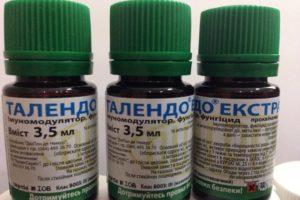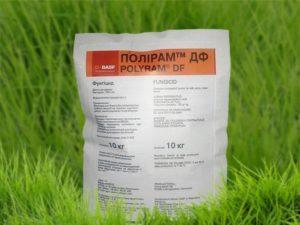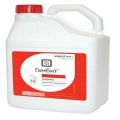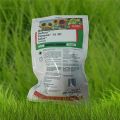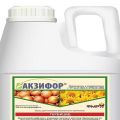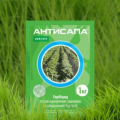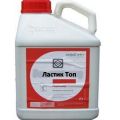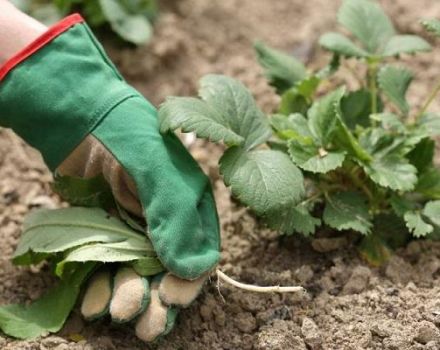Instructions for the use of the herbicide Racer, mechanism of action and consumption rates
Field work includes the control of weeds that inhibit the development of useful crops. Herbicide Racer is a drug that has a selective inhibitory effect on weeds during the growing season. The product completely decomposes in the soil without adversely affecting the growth of agricultural plants planted later.
Content
- 1 Composition, purpose and form of release of the herbicide Racer
- 2 Advantages and disadvantages
- 3 Mechanism and speed of action
- 4 Calculation of consumption for different plants
- 5 How to prepare a working solution
- 6 How to use the ready-made mixture?
- 7 Safety in use
- 8 Drug toxicity
- 9 Compatibility with other herbicides
- 10 Storage rules and periods
- 11 Equivalent means
Composition, purpose and form of release of the herbicide Racer
The main component of the herbicide is flurochloridone, which belongs to the class of fluorinated substances.
Racer is used in processing fields from:
- ambrosia;
- swans;
- sow thistle;
- thighs;
- nightshade black;
- chamomile;
- tenacious bedstraw.
The racer is used to protect against weeds of winter wheat, rye, corn, sunflower, potatoes, carrots, parsley.
Release form - 25% emulsion in a 5-liter canister. The solution is applied by air spraying (aerial spray).
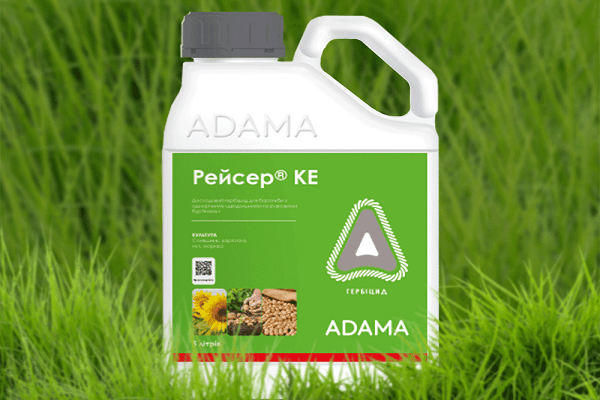
Advantages and disadvantages
The drug belongs to soil herbicides, allowing to control the growth of weeds before the emergence of a cultivated crop. The herbicide is indispensable in the fight against ragweed, beetroot, and quinoa.
The correct combination of the period of herbicide application to the soil and sowing of cultivated plants prevents the suppression of their growth by weeds at the beginning of the growing season.
The racer is low-toxic to warm-blooded organisms, including humans (hazard class 2). In relation to insects, it has a hazard class 3. It is forbidden to spray over the water body due to the danger of harm to freshwater inhabitants.
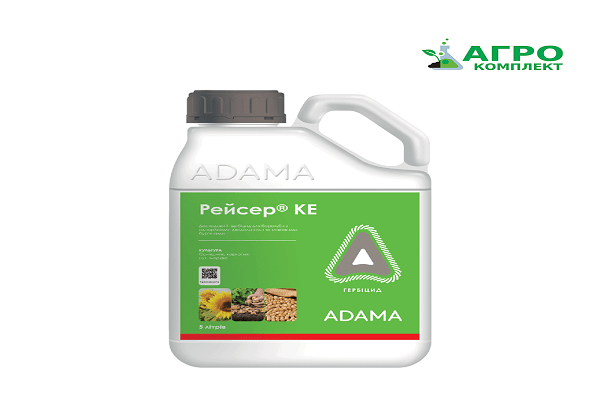
Mechanism and speed of action
The action of the chemical compound is to suppress the photosynthetic reaction in weed leaves. The mechanism is carried out by penetration from the soil through the roots and stems into the leaves. The period of action lasts for 2 months.
The effectiveness of the preparation depends on soil moisture. After spraying flurocholidone in the first week, rainy weather with a rainfall of 25-30 millimeters is required. Reducing the amount of moisture to 10-15 millimeters will accordingly reduce the effectiveness of the treatment.
Calculation of consumption for different plants
The manufacturer specifies the consumption rates of the active substance for spraying agricultural crops in the instructions. Based on the available data, in order to obtain 200 liters of solution of the required concentration (2-3 liters per hectare), it is necessary to mix 190 liters of water and 2x5 liter canisters of the Racer.
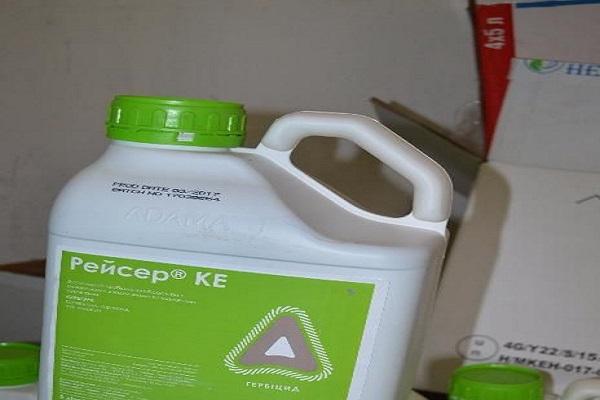
How to prepare a working solution
To prepare a working solution, use water with a temperature of at least 15 degrees, with a neutral or slightly acidic reaction. A clean tank is filled with water 1/3, add the required amount of emulsion, mix. The remaining amount of water is added.
How to use the ready-made mixture?
The instructions for use indicate the crops, planting dates, consumption of the active substance and the finished solution:
- Potatoes. Air handling is carried out 2-3 days after landing. The concentration of the active substance is 200-300 grams per liter. The consumption rate is 200 liters per hectare.
- Carrot. Spraying fields before emergence. The amount of active ingredient is 200-300 grams per liter, the consumption rate is 200 liters per hectare.
- Sunflower. Tillage before emergence. The concentration of flurocholidone is 300-400 grams per liter. The herbicide consumption rate is 200-300 liters per hectare.
- Wheat, rye, corn are sown six months after the introduction of the Racer into the soil.
- Tomatoes, onions, cabbage, radish, pumpkin, zucchini are planted one year after the fields are processed.
For effective destruction of weeds, a single application of the herbicide during the year is sufficient. The consumption rate is adjusted depending on the structure of the soil: on loams with a large amount of organic matter, it increases, on sandy loams, it decreases.

Safety in use
During the preparation of the working solution, it is necessary to protect the eyes, respiratory organs, hands from getting into the emulsion:
- glasses;
- respirator;
- gloves.
Clothes made of dense fabric should cover the skin as much as possible.

Drug toxicity
The racer is phytotoxic for cereals and annual dicotyledonous weeds.
The drug does not pose a danger to humans if its concentration does not exceed:
- in the soil - 0.03 milligrams per kilogram;
- water - 0.04 milligrams per 1 liter;
- working area (air) - 1.2 milligrams per 1 cubic meter;
- potatoes - 0.1 milligram per 1 kilogram;
- carrots - 0.1 milligram per kilogram;
- sunflower (oil, seeds) - 0.1 milligram per 1 kilogram.
Signs of human poisoning with herbicide occur at a flurocholidone concentration of 0.04 milligrams per kilogram of weight.
Damage to the central nervous system has symptoms:
- slow response;
- unsteady gait;
- trembling in the arms and legs;
- drooping eyelids;
- inability to take a full breath.
For bees, the herbicide has a hazard class 3.
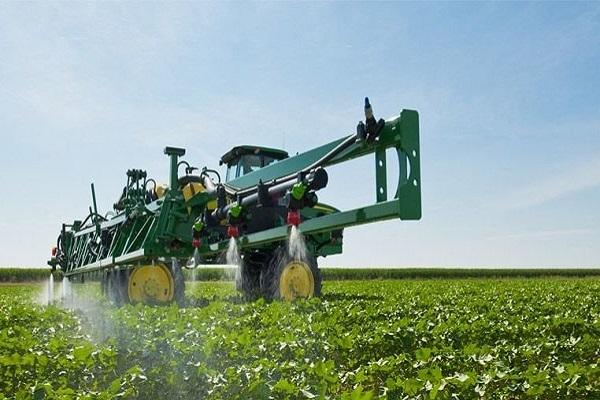
Compatibility with other herbicides
To destroy the quarantine ragweed weed, Racer's tank mixtures with soil herbicides are used:
- Acetochlor, acting on the seedlings of a weed plant for 3 months;
- Prometrex, which inhibits seedlings and adult plants;
- Triflurex, which affects the protein synthesis of germinating weed seeds.
Racer can be mixed with other soil herbicides.
The absence of sediment, foam, signs of stratification indicates the compatibility of the chemicals.
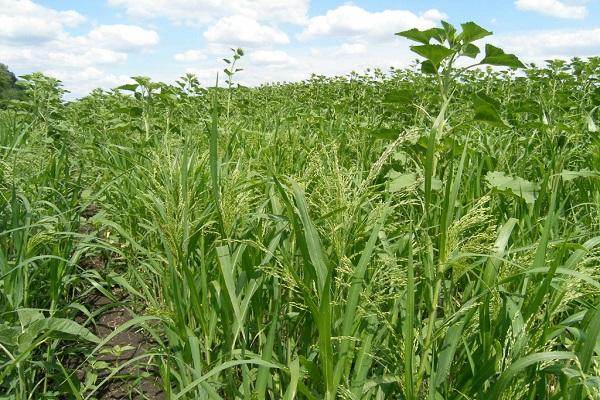
Storage rules and periods
The shelf life of the emulsion is 36 months from the date of issue.
Herbicides are stored in a dry room with plastered walls, natural ventilation, on a cement floor.
Equivalent means
Soil selective herbicides similar to the Racer in purpose, timing and methods of application to the soil:
- Base (active ingredient - acetochlor);
- Promex (d.v. - prometrine);
- Dual Gold (d.v. - metolachlor);
- Challenge (d.v. - aclonifen);
- Zenkor Liquid (d.v. - metribuzin).
The difference lies in the preferred application for individual plants.
